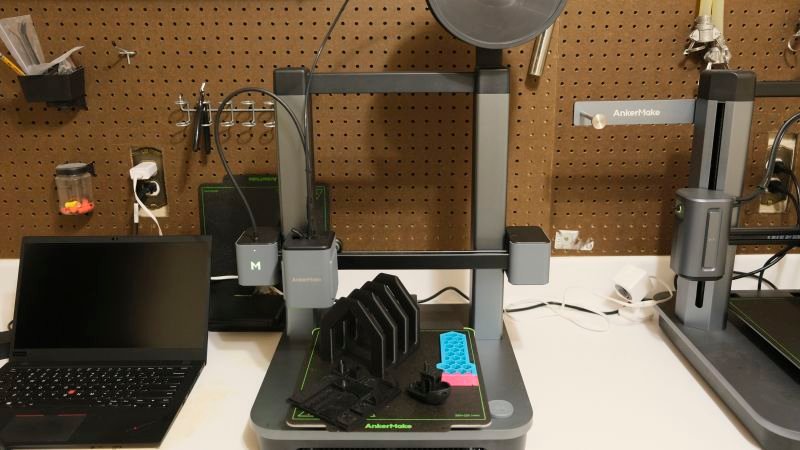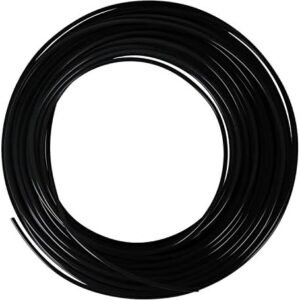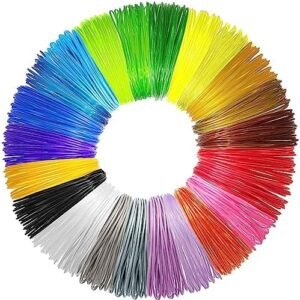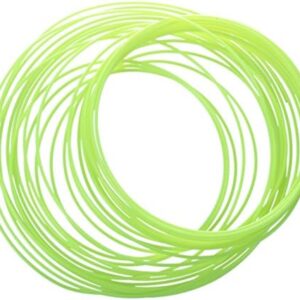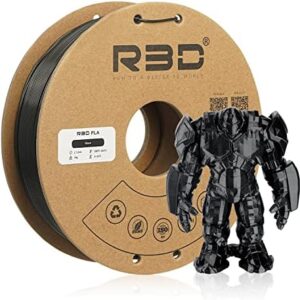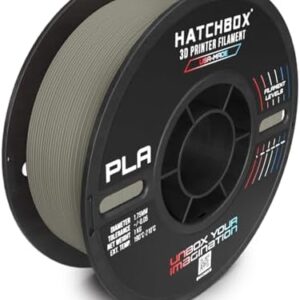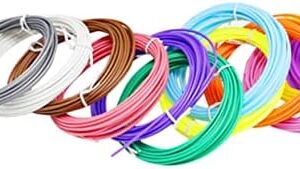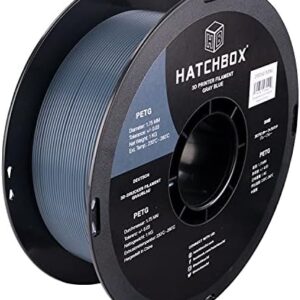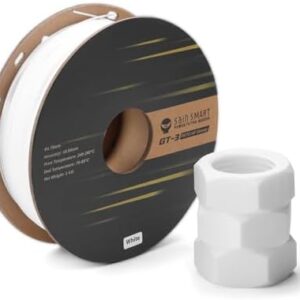Anchor isn’t usually a name that comes to mind when talking about 3D printing. The company is best known for portable chargers, cables and all sorts of accessories for smartphones and computers. However, the AnkerMake 3D printer range has started to put 3D printer manufacturers like Prusa and Ender on alert.
The $399 AnkerMake M5C is the company’s newest printer and a slightly smaller but cheaper and almost as capable version of the AnkerMake M5 that launched last year.
My kids and I have been printing and testing the M5C over the last few weeks and it really is an impressive piece of kit that has proven to be reliable and easy to use.
If you’re looking for a printer for someone who’s just starting out with 3D printing, the AnkerMake M5C is a great option.

A few years ago I purchased a Prusa Mini+ kit that required complete assembly of the printer upon arrival. It took about 15 hours to put together what looked like an extreme Lego kit. I still use the printer and it works great. I learned a lot along the way and appreciate the personal investment and confidence to fix the device if something breaks. But this experience is not for everyone.
The AnkerMake M5C comes almost fully assembled and the steps required to get it up and running require installing a handful of screws and connecting a few cables. It took maybe 10 minutes from opening the box to having a printer that was turned on and ready to connect to the Internet.
I spent another five minutes connecting it to my Wi-Fi using the AnkerMake mobile app and updating its firmware. Printing could then begin.

My children weren’t home when I assembled the printer, but I’m confident that any of them – ages 15, 13 and 11 – could have completed the assembly in the same time as me.
The entire setup process is designed to take as little time as possible and is a huge improvement over the setup process for the larger M5, which required a little more assembly.
One of the biggest advantages of AnkerMake printers is their printing speed. The AnkerMake M5C, like the M5 before it, has a maximum print speed of 500 mm/s, which is insanely fast for a mass-produced 3D printer. In comparison, the Prusa printer range prints at 200 mm/s. If these numbers don’t mean much, then let me rephrase.
When printing the mandatory Benchy test print on the M5C at maximum speed, the print takes approximately 30 minutes and 57 seconds. However, with the Prusa Mini+’s default setting, the same print would take 1 hour and 18 minutes.
One problem with increasing the print speed of a 3D printer is that it compromises the overall quality of the print. In fact, I have personally experienced many printouts failing when I tried to reduce printing time by increasing the speed.
However, Anker has done a good job of figuring out how to increase the speed without sacrificing too much quality. I experienced some of this with the AnkerMake M5, but it’s better with the M5C.

Over the last few weeks, my kids and I have printed between 20 and 25 different items. Some, like Benchy or Croc pendants, were small and only took a few minutes to print, while others, like this diorama cube tower, were large and took over 10 hours to print. Of all these prints we only had one error. It was a small crocodile pendant that had no proper supports and would not adhere to the print bed. It was a teaching moment for my children and the next print was successful.
More importantly, all prints look good. Not once did I take a print off the bed and wish it was higher quality. Admittedly the print quality could be better if I slowed down the printer and made changes to the settings, but for the things I printed, and I bet most things everyone prints on a regular basis, the print quality was fine.
To test how well the M5C prints at full speed, I printed this stress test design that has all sorts of tricky aspects, like overhangs, gaps, shapes, and walls. The printing took about an hour and a half. I fully expected that there would be imperfections in some of the gaps and finer details, and after looking at it closely I can’t find any major flaws.

I have long considered my Prusa Mini+ to be my most reliable 3D printer. I can rely on it to print anything I throw at it, with minimal problems even after long periods of idle time. After using the AnkerMake M5C for a few weeks and seeing its performance, I would put it in the same category as my Mini+. It just works.
The software experience is a big part of any 3D printer. This converts STL files into the code (called GCODE files) that tells the printer exactly what to do through a process called slicing. The same software is also used to change the speed and temperature of a print, which ultimately affects the final quality of a print, or even to heat up the printer and adjust the position of the nozzle so you can change filaments.
Cura and PrusaPrint are two of the most popular programs for controlling printers. Both offer a sophisticated experience, allowing granular control of your printer and ensuring consistent prints.
AnkerMake’s mobile and desktop apps offer the same functionality, but both are considered beta versions rather than full-featured apps. Therefore, the experience is sometimes inconsistent and can be frustrating.

For example, I set up a computer next to the printer so my kids can download, cut, and print designs without having to constantly ask me for help. At least that was my thought. In fact, they have to ask me for help every time they want to change the filament color because the AnkerMake desktop app can’t heat up and move the nozzle. This is a basic task that the AnkerMake desktop app should have integrated. Instead, my kids have to ask me to control the printer with the mobile app so they can print in a different color. Frustrating.
In Anker’s defense, the company has released a printer profile for Cura and PrusaPrint that allows you to cut prints for the M5 using your favorite app, but the same profiles are not yet available for the M5C. But even then, you can’t actually control the printer to change filament through any of these apps.
I wish AnkerMake in particular would speed up the development process of its desktop app and add the core features it so desperately needs. Right now it’s a broken experience.
This is admittedly a minor gripe that shouldn’t be an issue for many users, but I have to say I was disappointed when I opened the box and discovered that Anker hadn’t included a small plastic spool in the box for testing prints. The M5C is a printer clearly designed and intended for entry-level printers, most of whom are unlikely to have pre-ordered additional spools of PLA or any other material they plan to use.
This means that once they have the printer assembled and are ready to print Benchy or any of the other staple first prints, they literally have nothing left to print it with.
Anker includes a very small spool of black PLA with the M5, and this should also be the case with the M5C.
The AnkerMake M5C is a fast, reliable and impressive 3D printer that is so easy to use that I can let my kids run wild with it. The software you use to control the printer is clearly a vulnerability that Anker appears to be slowly trying to fix. I just wish they would speed it up. If you’re looking for a printer for someone who’s just starting out with 3D printing, the AnkerMake M5C is a great option. However, if you don’t want to deal with the software quirks, the $1,099 Prusa MK4 is one of the best 3D printers money can buy, but it comes at a price. For a smaller, beginner-friendly printer, I would also recommend the Prusa Mini+ semi-assembled kit for $459.
